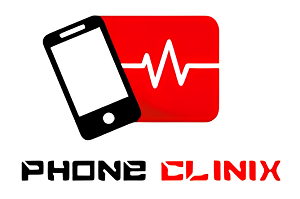In today’s digital era, smartphones are more than just communication devices—they are powerful tools for work, entertainment, photography, navigation, and much more. As these gadgets become increasingly integral to our daily lives, ensuring their optimal performance is essential. Whether you’re a tech enthusiast, a repair technician, or an average user, the right phone diagnostic software can save time, money, and hassle. Especially for Android users, leveraging advanced Android diagnostic tools can help identify potential issues early on. In this article, we’ll explore how to run a full health check with ease using the best diagnostic tools available today.
Why You Need Phone Diagnostic Software
Smartphones, like any electronic device, are susceptible to wear and tear. Common issues include battery degradation, overheating, faulty sensors, unresponsive touchscreens, and more. While some problems are easy to detect, others may go unnoticed until they escalate.
This is where phone diagnostic software comes into play. These tools allow users to test various components of their phones, identify faults, and in many cases, get actionable solutions. Whether you’re preparing to sell your phone, verify a device’s functionality, or troubleshoot an issue, diagnostic apps can be a lifesaver.
Understanding Android Diagnostic Tools
Android is known for its flexibility and customizability, and this extends to the realm of diagnostics. Android diagnostic tools are applications or software suites designed specifically to test hardware and software functions on Android devices. These tools can evaluate:
- Battery health and charging status
- CPU performance and temperature
- RAM and storage usage
- Sensor functionality (e.g., accelerometer, gyroscope, proximity sensor)
- Camera and microphone operation
- Screen performance (e.g., dead pixels, touch responsiveness)
- Network connectivity (Wi-Fi, Bluetooth, cellular)
Key Features to Look for in Android Diagnostic Tools
When choosing a phone diagnostic software for Android, there are several key features to consider:
1. Comprehensive Testing Capabilities
A good diagnostic tool should cover all major hardware and software aspects. It should allow users to test individual components like the camera, speakers, screen, and sensors.
2. Real-Time Monitoring
Some apps provide real-time data on CPU usage, battery temperature, and RAM consumption, helping users keep track of their phone’s performance.
3. User-Friendly Interface
Technical tools can often be intimidating. Choose diagnostic apps with intuitive layouts and clear instructions so that even non-tech-savvy users can run a full health check with ease.
4. Exportable Reports
Advanced tools offer detailed diagnostic reports that can be saved or shared with repair professionals or buyers if you’re selling your device.
5. Compatibility and Regular Updates
Ensure that the app is compatible with your specific Android version and device model. Frequent updates also ensure that the tool stays effective against new software bugs and hardware challenges.
Top Phone Diagnostic Software for Android
Here are some of the best Android diagnostic tools that help users run a full health check with ease:
1. Phone Doctor Plus
Phone Doctor Plus is an all-in-one diagnostic app that supports more than 30 types of hardware tests. From multi-touch and screen tests to memory and sensor analysis, it provides a comprehensive look into your phone’s condition.
Key Features:
- 30+ diagnostic tools
- Battery health monitoring
- Network speed testing
- System performance benchmarking
2. TestM
TestM is perfect for people who are buying or selling a smartphone. It provides an easy-to-read report that includes detailed test results of all key functions.
Key Features:
- Covers screen, audio, motion sensors, and connectivity
- Generates a full phone condition report
- Available in multiple languages
- No user data is collected
3. CPU-Z
Originally a desktop application, CPU-Z has made a successful transition to Android. While not a diagnostic tool in the traditional sense, it offers valuable insights into your phone’s hardware.
Key Features:
- Detailed specs of CPU, GPU, and battery
- Real-time performance monitoring
- Thermal readings
- Great for tech-savvy users
4. AccuBattery
If battery issues are your main concern, AccuBattery is a must-have. It doesn’t just test your battery—it helps you prolong its life.
Key Features:
- Estimates battery health and charging speed
- Real-time battery usage stats
- Sleep mode analysis
- Helps optimize charging habits
5. Phone Check and Test
This app is ideal for a thorough diagnostic sweep. It offers both quick and deep testing modes, making it versatile for different users.
Key Features:
- Tests 20+ components
- Detailed phone status report
- System resource monitoring
- Wi-Fi, GPS, and cellular signal testing
How to Run a Full Health Check with Ease
Using Android diagnostic tools is typically straightforward. Here’s a general guide on how to run a full health check with ease:
Step 1: Download a Trusted App
Choose one of the recommended tools above and install it from the Google Play Store.
Step 2: Grant Necessary Permissions
These tools often need access to your camera, microphone, sensors, and storage. Be sure to grant these permissions for accurate testing.
Step 3: Perform a Quick Scan
Most diagnostic apps offer a “quick scan” or “basic test” option that checks major components in just a few minutes.
Step 4: Run Advanced Tests
For more detailed insights, choose the “full test” or “deep scan” option. This can take up to 10–15 minutes, depending on the app and phone model.
Step 5: Review the Report
After testing, you’ll receive a summary or detailed report. This may include:
- Hardware functionality status
- Suggestions for maintenance
- Warning signs of failure
Step 6: Take Action
Based on the results, you can decide whether to update your software, replace a component, or take your phone to a repair shop.
Benefits of Regular Phone Diagnostics
- Preventive Maintenance: Catch small problems before they become big ones.
- Improved Performance: Removing bugs or optimizing settings can significantly enhance speed and efficiency.
- Battery Longevity: Proper monitoring helps extend your battery’s lifespan.
- Better Resale Value: Showcasing a diagnostic report can help you sell your phone for a better price.
- Peace of Mind: Knowing your phone is in good health removes anxiety about unexpected malfunctions.
When to Use Phone Diagnostic Software
- Before selling or buying a used phone
- After dropping or exposing the phone to water
- When the device behaves unusually (freezing, crashing, overheating)
- During routine check-ups (monthly or quarterly)
- After installing major software updates
Final Thoughts
The world of phone diagnostic software is vast and highly useful for anyone who owns an Android device. With the help of advanced Android diagnostic tools, users can now run a full health check with ease, ensuring their devices perform at their best. Whether you’re troubleshooting a specific issue or just being proactive about device maintenance, investing a few minutes in a diagnostic check can save you from costly repairs and untimely device failures.
As smartphones continue to evolve, so will diagnostic technologies—offering even more accuracy, automation, and real-time insights in the years to come. So, keep your phone in top shape, stay informed, and make diagnostics a regular part of your digital routine.



